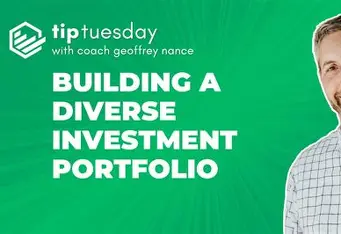For those who have more money to invest, moving from a regular job to becoming an investor is more than just changing careers—it's a smart step toward gaining financial freedom and building more wealth. Rather than simply following the usual tips about saving and basic investing, this three-year strategy uses your specific resources and connections to create a unique route in the investment field.
Year 1: Knowledge Accumulation and Network Cultivation
Specialized Learning Beyond the Basics
During your initial year, avoid basic investment books. Wealthy individuals often have the means to join special, high-level investment classes provided by leading business schools or well-known financial institutions. These courses usually offer detailed information on alternative investments such as private equity, hedge funds, and venture capital, which most people don’t get access to. Moreover, consider subscribing to high-quality financial research services that provide exclusive data and analysis, helping you gain an advantage in tracking market trends.
Leveraging High - Value Networks
Your current network probably consists of people from different fields, business owners, and others with significant wealth. Consider participating in special networking functions like private investment gatherings, luxury conferences, and elite social events. Rather than simply gathering business cards, aim to cultivate valuable relationships. Talk about investment possibilities, express your interests, and gain insights from others' experiences. These relationships can lead to exclusive deals, guidance from experienced investors, and future collaboration opportunities.

Year 2: Strategic Experimentation and Skill Refinement
Micro - Investments in Niche Markets
Build a strong understanding and expand your connections before diving into small investments in specific markets. For instance, think about putting your money into new fields that align with your interests or professional skills. If you’re in the technology sector, consider investing in startups focusing on artificial intelligence or blockchain technology. Wealthy individuals might look at art and collectibles as different types of investments. Acquiring limited-edition art pieces or unique collectibles can serve as both a personal passion and a potential asset that may increase in value over time. These smaller investments give you practical experience with minimal risk to your overall funds.

Developing Analytical and Negotiation Skills
Investing involves more than simply selecting the right assets; it requires careful data analysis, risk evaluation, and deal negotiation. It's important to invest time in building these abilities. You might consider joining investment clubs or taking part in simulation games to practice making investment choices without risk. When it comes to actual investments, prioritize enhancing your negotiation skills. Whether you’re negotiating ownership shares in a new venture or determining the cost of an asset, refining these abilities will be essential for your success as an investor.
Year 3: Scaling Up and Portfolio Diversification
Building a Diverse Investment Portfolio
As you reach the last year of the three-year plan, now is the moment to enhance your investments and create a varied portfolio. Distribute your money across different types of assets, including stocks, bonds, property, private investments, and digital currencies.Investors with significant wealth might also want to look into hedge funds or fund-of-funds, which allow you to tap into a group of expert managers and a broad spectrum of investment choices. When you spread out your investments, you reduce the risk that comes from depending too much on a single asset type, while also increasing the likelihood of steady returns.

Establishing Yourself as a Thought Leader
As you become more experienced and find success in investing, consider using your status to become a respected voice in the investment community. You might write for financial magazines, present at investment events, or create a podcast to share your insights and personal stories. Developing your personal brand as an investor not only improves your image but also draws in more investment possibilities and potential collaborators. This helps you evolve from just an investor to a prominent figure in the investing field.
To sum it up, changing from a traditional job to becoming a successful investor in three years is a challenging but possible goal for those with significant financial resources. By concentrating on gaining knowledge, expanding your network, trying out strategies, and growing your portfolio, you can smoothly transition into investing and discover new paths for building wealth.

The Rise of Direct-to-Consumer (D2C) Brands

Elevate Your Lifestyle Through Smart Wealth Management

Socially Conscious Financing: A Guide for Every Investor

Estate Planning: 5 Steps for Wealth Legacy

Esports Betting & Options: Hidden Parallels

The Smart Transformation of Your Wallet

Creative Strategies for Small Business Owners
